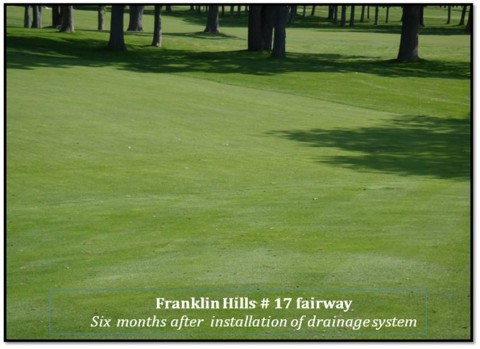
Where are the drain lines? One of the biggest challenges of any drainage project is making it look as if the project never took place. Nobody likes to see droughty drain lines for years after the completion of a project, especially not Brian Schwiehofer at Franklin Hills C.C. in Franklin, MI (just outside of Detroit).
Anyone that has ever visited Brian’s course would vouch for his attention to detail, and 50,000 feet of visible drain lines would not have been acceptable in Brian’s world. Any project can suffer from some wilted lines during prolonged dry stretches, particularly in the first couple of years after the completion of the project. Here at Turf Drainage Co. of America, we have witnessed millions …
